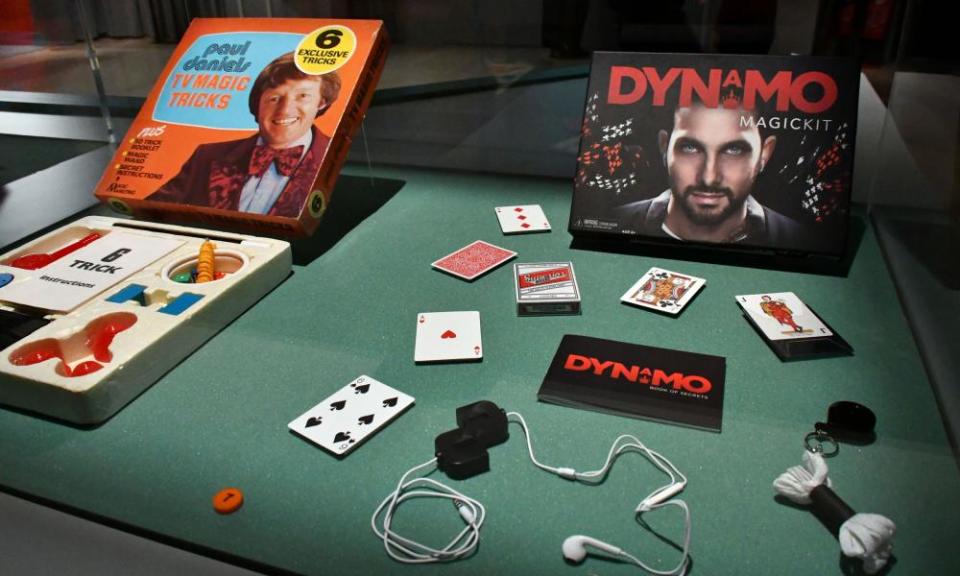Abracadabra: London show puts magic props under the spotlight

Tommy Cooper’s fez, a gorilla mask used by Derren Brown and a wooden box and saw that Paul Daniels used to saw Debbie McGee in half have gone on display at a museum best known for exploring science and medicine.
“It is so macabre,” said artist AR Hopwood of the saw-in-half box. “It looks like a torture device. There are no foot holes and no head hole so it would have needed an extraordinary feat of dexterity by the female assistant. Unless they were really sawn in half.”
The box is one of a number of magicians’ props exhibited at the Wellcome Collection in London along with photographs, films, posters and objects used in experiments investigating magic. The exhibition is the first to focus on the relationship between magic and psychology.
How magicians manipulate the mind is a central theme of the show. The saw-in-half box is a good example of the importance of the magician’s assistant in misdirecting the audience.
The box was used by Daniels and McGee in 1982 and is a replica of the one used in the original saw-in-half trick designed by the magician PT Selbit in 1921.

Paul Daniels TV Magic Tricks from the 1980s and Dynamo Magic Kit, 2015.Photograph: Nils Jorgensen/Rex/Shutterstock
The show shines a light on the Victorian interest in spiritualism and seances and includes objects such as a spirit trumpet, which would mysteriously rise during a seance to emit spirit voices, and, for the more skilled medium, ectoplasm.
One section explores the story of Harry Houdini’s attempts to expose the medium Mina “Margery” Crandon. In 1924, Crandon attempted to win $2,500 offered by Scientific American to any medium who could demonstrate their powers under scientific controls.
Houdini was on the judging committee and the experiments made the front pages. One splash headline in the Boston Globe read: “Margery genuine, says Conan Doyle; he scores Houdini.” Further down the front page is a story headlined: “Carter finds tomb intact.”

An illustration from Pearson’s magazine, 1910.Photograph: Nils Jorgensen/Rex/Shutterstock
Houdini went to extraordinary lengths to prove Crandon was a fraud, and a replica of a strengthened wooden box in which he made her sit during the tests is on display.
“Margery was a celebrity of her day,” said Hopwood, a co-curator of the show. “What is extraordinary is that for a long time she did convince researchers she was the real deal. It was only when Houdini got involved that some of her antics were exposed, or semi-exposed.”
Crandon never got the money but many people still believed in her, branding Houdini a fraud. “You have this remarkable public discussion about evidence and what constitutes legitimate evidence which just feels so pertinent today,” said Hopwood.
Smoke and mirrors: The Psychology of Magic is at the Wellcome Collection, 11 April-15 September.

 Yahoo News
Yahoo News 
